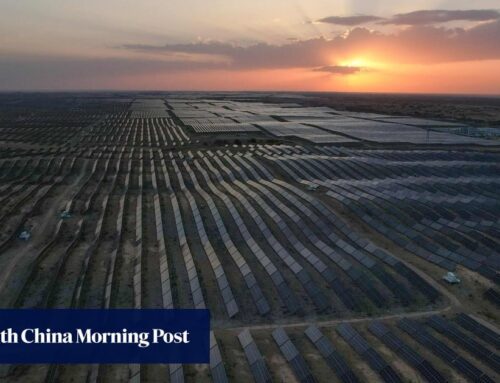Colorado ski resorts are investing heavily in snowmaking. Climate change isn’t the only re
April 11, 2025

Over the past two summers, Alterra Mountain Company has shelled out $37 million to upgrade Winter Park’s antiquated snowmaking system, one that was installed in the late 1970s when lift tickets cost less than $12. The goal was to extend the length of ski seasons, enabling the resort to open well before Thanksgiving and stay open deep into spring.
But the snow gods have smiled on Winter Park recently. As of Thursday, the resort had received 340 inches of snow this season, the most of any ski area in Colorado. Its base depth of just under six feet stood at 11% above normal for the date.
And so, even as other ski areas are shutting down for the season — eight have already closed and five more will close on Sunday — Winter Park is still going strong. It will stay open two more weeks, while the Mary Jane side of the mountain will remain open as long as conditions permit. Last year, that was May 28.

Resort companies like Alterra and Vail Resorts that are investing in expansions of their snowmaking systems acknowledge the threat of climate change is a consideration in their thinking, but the more immediate goal is to extend the length of seasons in the near term.
“There are benefits to it being a hedge against climate change, but that’s not why we did it,” said Winter Park spokeswoman Jen Miller. “It’s kind of an interesting story for us, because we are now one of the resorts that has the longest seasons in Colorado. We’re opening earlier and we’re staying open later.”
Vail Resorts invested more than $100 million in snowmaking company-wide over the past 10 years. In 2019, Vail Mountain underwent the largest snowmaking expansion project in the resort’s history with a heavy focus on two trails from the summit down to Mid-Vail. The company also has invested in snowmaking at Keystone, so that it can offer skiing at the top of that mountain in October, and at Breckenridge, where it aims to offer skiing into May.
“We’ve been able to extend our season by 12 days at our Rocky Mountain resorts,” said Bill Rock, president of the mountain division at Vail Resorts. “The industry (overall) has invested in snowmaking as well, but the industry in the Rockies has added about five days.
“We look to provide more days, and more consistent conditions, for our guests,” he continued. “We try to open Keystone as early as we can, and thanks to our investment in automated snowmaking, we’re able to do that. We go into May at Breckenridge, and that’s because of our investments in snowmaking there. We’ve been able to have some of our longest seasons at Vail over the last few years.”
Mountaintops tend to be colder than base areas and can hold snow longer. That’s why early-season skiing at Keystone and Vail can involve skiing at the top of the mountain, but riding the lift or gondola down to the base rather than skiing.
In 2020, the Aspen Skiing Company installed snowmaking at the top of Aspen Mountain for similar reasons. “It was very much intended to create an upper-mountain opening and closing scenario in lower snow years,” said Aspen Snowmass spokeswoman Hannah Dixon, adding that there are provisions to do the same at Snowmass in that resort’s master plan.

According to the Lakewood-based National Ski Areas Association, the average length of ski seasons in the Rocky Mountain region over the past decade has fluctuated between 122 and 132 days, excluding the COVID-shortened season of 2019-20 (103 days). The average length over that period has been 127 days, but the past three seasons stood at 130 days or more.
Miller said Winter Park exceeded 200 days the past two seasons, and it will again this season if Mary Jane hangs on until late May as it did last year. Winter Park has seen above-average snowfall the past three seasons, too.
“This is our 85th season,” Miller said. “If you go back to the early days of skiing in Colorado, we didn’t start skiing until late December or January. Natural snow is variable, and snowmaking has allowed us to broaden the season. It’s part of doing business as a ski area in the west.”

Although ski areas operate their snowmaking guns primarily in early season, resort officials say those efforts continue to pay dividends in the spring because manmade snow is denser. As a result, it is more durable and holds up better when warmer temperatures arrive in the spring.
“When you build a super-solid, consistent base on the front end, you see less snowmelt and fewer issues when temperatures warm in the spring,” said Vail Resorts spokeswoman Lindsay Hogan. “It has benefits on both sides of the season.”
Eldora Mountain Resort, the Front Range ski area that opened Nov. 7 this season and will close on April 20, is seeking approval to expand its water storage capabilities for snowmaking in the future.
“That is just a common-sense hedge against what we’re seeing in terms of climate trends,” said Eldora spokesman Sam Bass. “We need the opportunity to store more water in case there is a summer when our primary snowmaking water storage doesn’t fill up all the way. Any ski resort that’s thinking about the future, which is every one, is probably thinking about ways to ensure that they have adequate water supplies and the ability to make snow.”
The ability to offer early-season skiing is a key part of Eldora’s competitive strategy. This season it opened a week earlier than scheduled. Last season, it opened two weeks ahead of schedule.

“That time of year, we’re essentially the same size as Winter Park or Copper, or any of the big guys, because we all only have a couple of trails open,” Bass said. “The Ikon passholder, early in the season, if they only have two or three Ikon options to choose from, they say, ‘Why would I drive to Winter Park or Copper when I can just drive to Eldora for the same amount of terrain or more?’ It’s an opportunity for us to make hay early and provide a good product for the people who really want to get out and get after it early-season.”
The looming specter of climate change remains a concern for the industry, however.
“Climate change has a real impact on our business, and it’s something that we’re concerned about,” said Rock, who is second in command at Vail Resorts to chief executive Kirsten Lynch. “We’re uniquely positioned to serve our guests during this volatility that it represents. The $100 million in snowmaking across the company has allowed us to provide reliable conditions for our guests throughout the whole season.”
The same is true of Winter Park’s massive investment in snowmaking.
“It puts us in a much better position long-term, depending on how snowfall will be in the next 10, 20, 30 years,” Miller said. “It’s a tricky subject. It’s something that ski areas have done for a very long time, but it’s become more of a reality that this is what we’re going to need to be able to operate in the future.”
Search
RECENT PRESS RELEASES
Related Post









